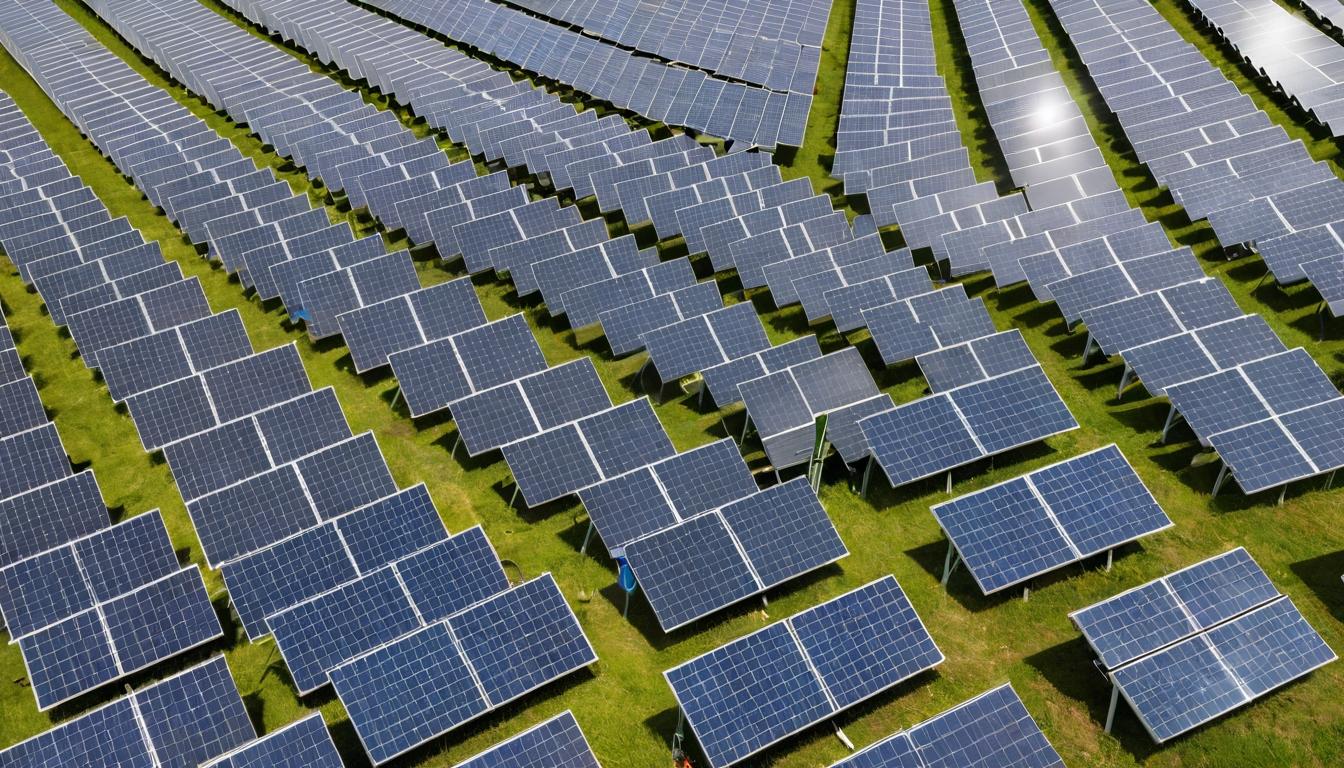Walking through the sprawling solar farm in California's Mojave Desert, the gleaming panels stretch toward the horizon like a technological crop. But what happens when these energy harvesters reach the end of their 25-30 year lifespan? The answer reveals an emerging industry that could either become an environmental disaster or a circular economy triumph.
For years, solar panel recycling has been the industry's dirty little secret. While manufacturers tout clean energy production, the disposal problem has been quietly accumulating. The first generation of commercial solar panels installed in the late 1990s and early 2000s are now approaching retirement age, creating what some experts call a "solar tsunami" of electronic waste.
The scale of the challenge is staggering. The International Renewable Energy Agency projects that by 2050, the world will be dealing with 78 million metric tons of solar panel waste annually. That's enough to fill over 3,000 Olympic-sized swimming pools with discarded panels every year. Yet current recycling rates hover around 10%, leaving millions of panels destined for landfills where their valuable materials become environmental hazards.
What makes this waste stream particularly concerning is the toxic cocktail contained within each panel. While silicon solar cells themselves are relatively benign, the panels contain lead, cadmium, and other heavy metals that can leach into groundwater. The encapsulation materials and backsheets often include fluorine compounds that can persist in the environment for centuries.
But here's where the story takes an unexpected turn. A new generation of recyclers and researchers are discovering that what was once considered waste is actually a treasure trove of valuable materials. A typical solar panel contains silver, copper, silicon, and aluminum worth approximately $15-20 in recovered materials at current market prices. When you multiply that by the millions of panels needing recycling, you're looking at a multi-billion dollar opportunity.
The recycling process itself is becoming increasingly sophisticated. Early methods involved crude shredding that mixed materials and reduced their value. Today, advanced facilities use thermal, mechanical, and chemical processes to separate components with remarkable precision. Some operations can recover 95% of the glass and 100% of the metals from processed panels.
One of the most exciting developments comes from researchers at the National Renewable Energy Laboratory who've developed a process using heated blades and infrared heating to delicately separate glass from silicon cells without breaking either. This approach preserves the value of both materials and represents a significant leap forward from traditional crushing methods.
Meanwhile, European companies are leading the charge in creating truly circular solar economies. In Germany, a consortium of manufacturers has established take-back programs that ensure panels don't end up in landfills. French company ROSI has developed technology that can extract high-purity silver and silicon from end-of-life panels, materials that can then be used to manufacture new solar cells.
The economic incentives are becoming increasingly compelling. As raw material prices fluctuate and supply chains face geopolitical pressures, recycled materials offer manufacturers price stability and security. The silver content alone in solar panels represents a significant opportunity—solar manufacturing currently consumes about 10% of global silver production.
But the revolution isn't just happening at industrial scale. Startups are developing mobile recycling units that can be deployed to large solar farms, processing panels on-site and dramatically reducing transportation costs. Others are creating blockchain-based tracking systems that follow panels from manufacture through recycling, ensuring responsible end-of-life management.
The regulatory landscape is also shifting rapidly. The European Union has implemented extended producer responsibility requirements, making manufacturers responsible for their products throughout their lifecycle. Several U.S. states are considering similar legislation, while Washington state has already banned solar panels from landfills entirely.
What's particularly fascinating is how this recycling revolution is driving innovation in panel design itself. Manufacturers are now creating panels with disassembly in mind, using snap-together components instead of permanent adhesives and labeling materials for easier sorting. Some are even experimenting with panels made from completely recyclable polymers instead of glass.
The human dimension of this story is equally compelling. In Texas, a former oil field worker now runs a solar recycling facility, employing people from fossil fuel backgrounds in the clean energy sector. In Arizona, Native American tribes are exploring solar recycling as both an economic development opportunity and environmental stewardship initiative.
As I stood watching a robotic arm carefully separate glass from silicon at a recycling facility outside Phoenix, the facility manager shared a perspective that stuck with me. "We're not just recycling panels," he said. "We're recycling the idea that clean energy has to create waste. We're proving that sustainability can be sustainable."
The challenge ahead remains significant. Recycling infrastructure needs massive expansion, collection systems require standardization, and consumer awareness must increase. But the pieces are falling into place for what could become one of the clean energy transition's greatest success stories.
What's clear is that the future of solar energy depends not just on installing new panels, but on responsibly managing the ones we already have. The companies and communities that master this challenge today will be positioned to lead the clean energy economy of tomorrow. As one industry insider told me, "The next gold rush in solar won't be in manufacturing—it will be in re-manufacturing."
The hidden revolution in solar panel recycling that could transform the industry

